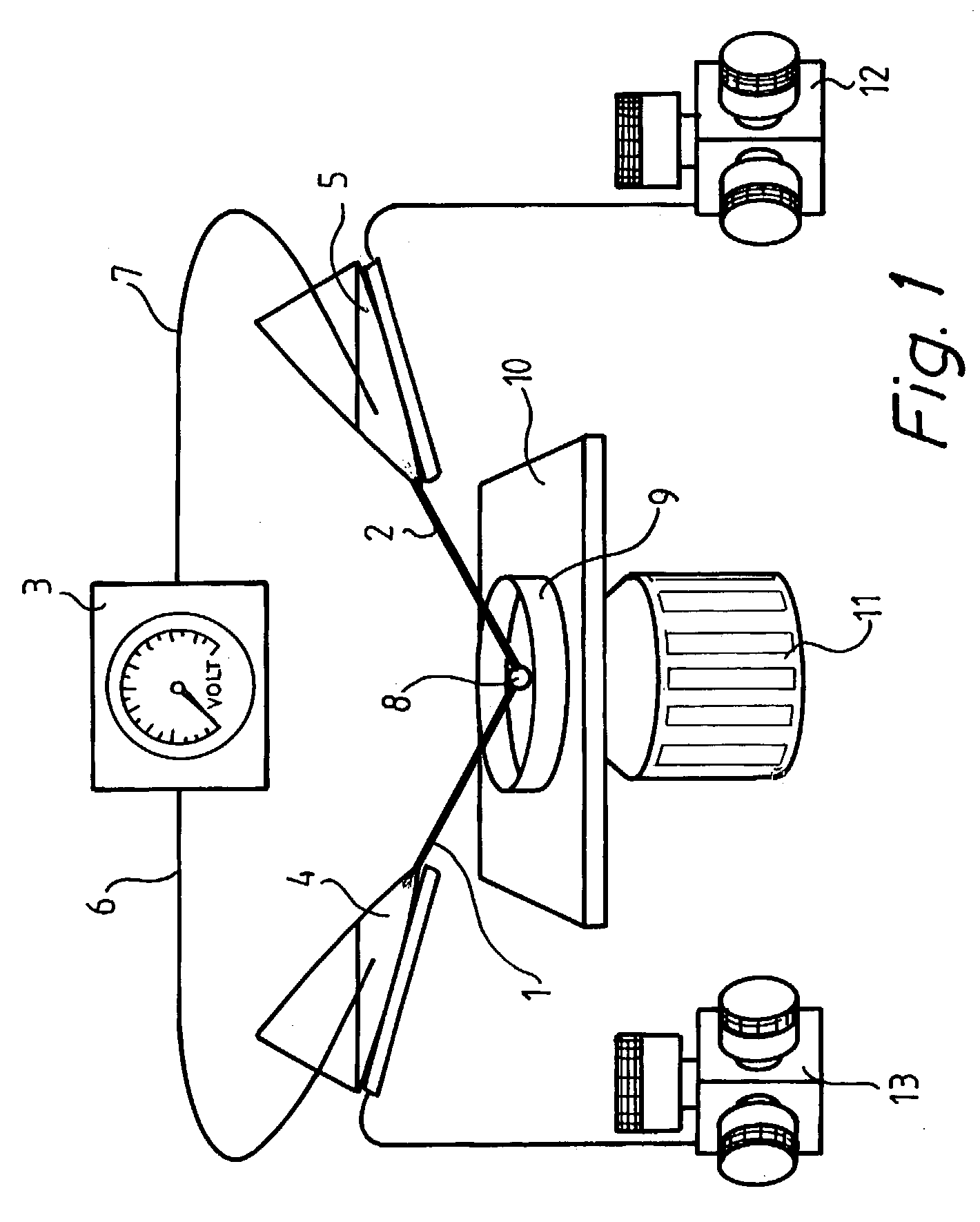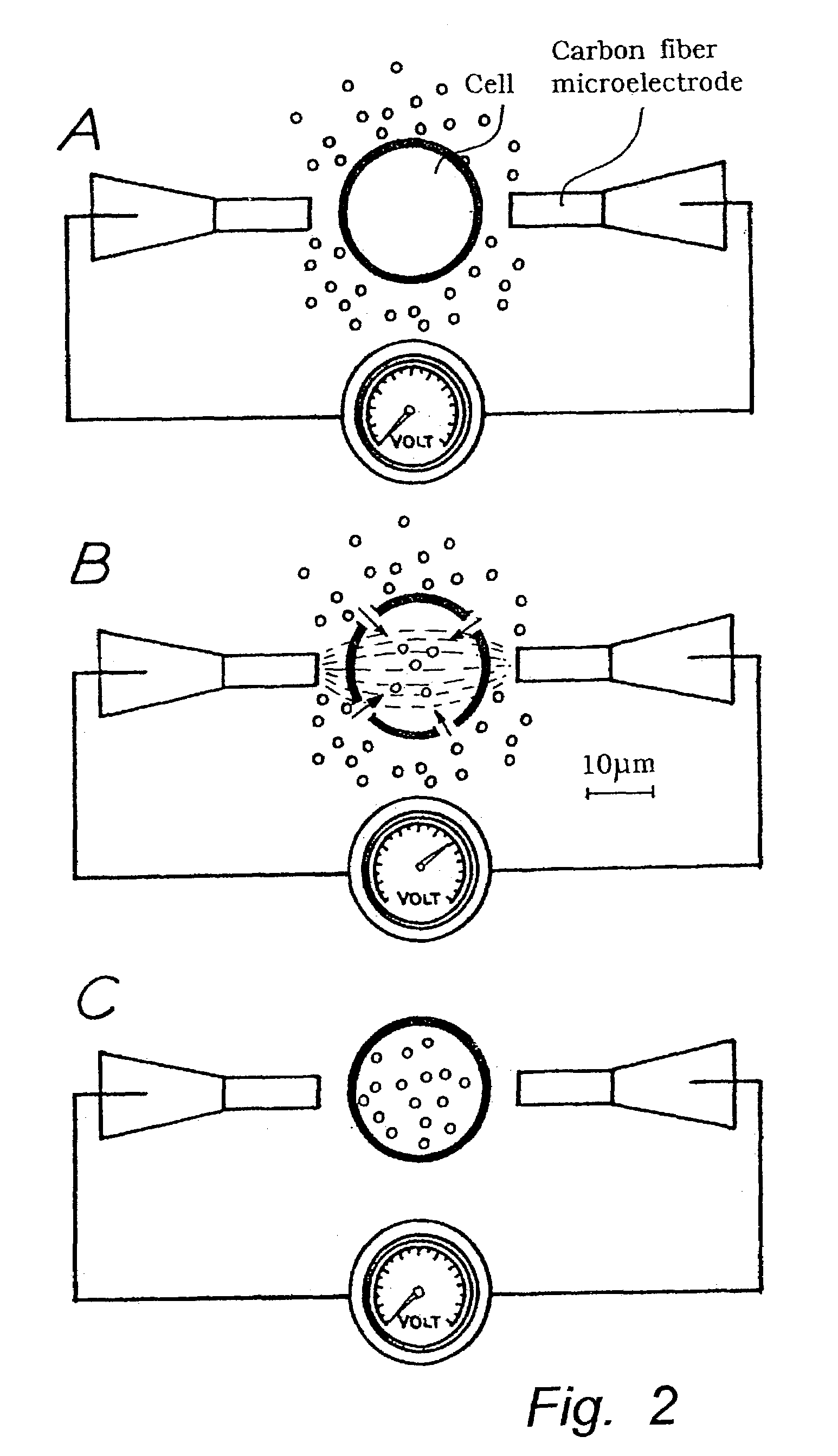Method for electro-permeabilization of individual cellular and organellar structures and use thereof
- Summary
- Abstract
- Description
- Claims
- Application Information
AI Technical Summary
Benefits of technology
Problems solved by technology
Method used
Image
Examples
example 1
Electroporation of Progenitor Cells from Mature Rat Brain to Incorporate a Fluorescent Marker
[0070]Progenitor cells were cultured according to standard procedures (T. D. Palmer, J. Ray, F. H. Gage, Mol. Cell. Neurosci., 6, 474–486 (1995)) and plated onto number 1, 1-inch circular coverslips coated with poly-D-ornithine and lamilin. The cells were allowed to stand overnight to adhere to the glass surface. The cells were incubated in a humid atmosphere at 37° C. with 5% CO2 and 95% air. For the electroporation, the cell dishes were mounted into a circular low-rim polycarbonate holder using mounting grease. The polycarbonate holder with the cover slip was mounted on the stage of an inverted microscope (Leica DM IRB). The cells were held in a HEPES-buffered saline containing 137 mM NaCl, 0.4 mM MgCl2, 0.64 mM KH2PO4, 3.0 mM NaHCO3, 0.41 mM MgSO4, 5.4 mM KCl, 20 mM HEPES, 1.26 mM CaCl2, and 5.5 mM D-glucose (pH adjusted to 7.4 with NaOH). This HEPES buffer was supplemented with fluoresce...
example 2
Electroporation of Intracellular Organelles in Progenitor Cells from Adult Rat Brain Using Extracellular Electrodes
[0073]The experimental set-up from example 1 was repeated for in situ electroporation of organelles in single progenitor cells. Specifically, fluorescein was introduced into single cells by ten 0.5-Hz superthreshold field applications resulting in potential shifts at the cell membrane of 1.6 V±0.07 V (range 1.5–2.4 V), and compared to cells electroporated at low membrane potentials of 0.5–1.0 V. Following electroporation, the extracellular dye-containing media was replaced by a Hank Hepes solution. The result of electroporation at high voltages is shown in FIG. 7A, where punctuate fluorescence is observed in the exo-nuclear cytoplasmic region, but not in the nuclear region which contains a smaller number of organelles. In total, eighteen out of twenty cells electroporated in this protocol displayed a similar staining pattern, reminiscent of what is observed using an org...
PUM
| Property | Measurement | Unit |
|---|---|---|
| Length | aaaaa | aaaaa |
| Length | aaaaa | aaaaa |
| Diameter | aaaaa | aaaaa |
Abstract
Description
Claims
Application Information
 Login to View More
Login to View More - R&D
- Intellectual Property
- Life Sciences
- Materials
- Tech Scout
- Unparalleled Data Quality
- Higher Quality Content
- 60% Fewer Hallucinations
Browse by: Latest US Patents, China's latest patents, Technical Efficacy Thesaurus, Application Domain, Technology Topic, Popular Technical Reports.
© 2025 PatSnap. All rights reserved.Legal|Privacy policy|Modern Slavery Act Transparency Statement|Sitemap|About US| Contact US: help@patsnap.com



